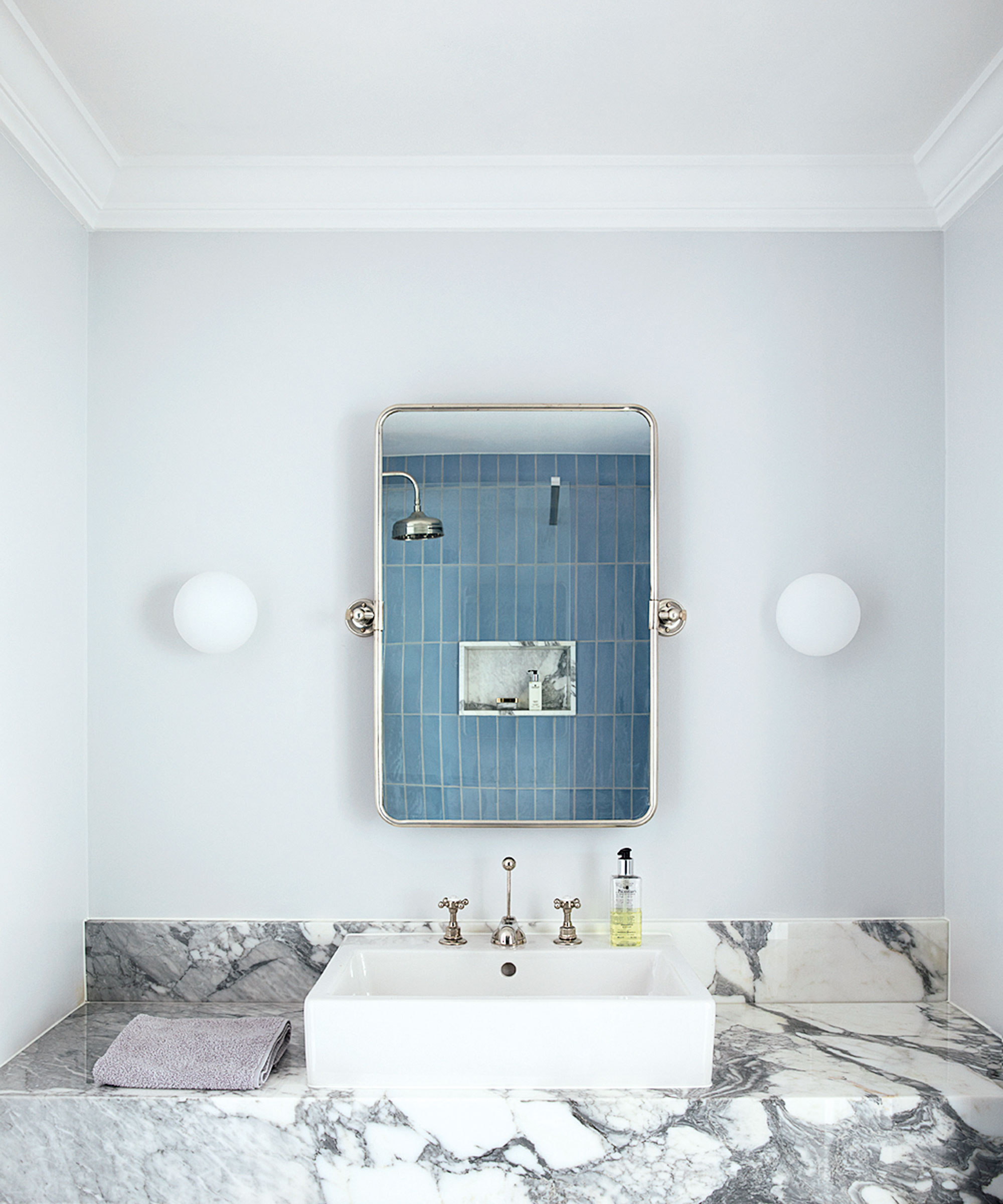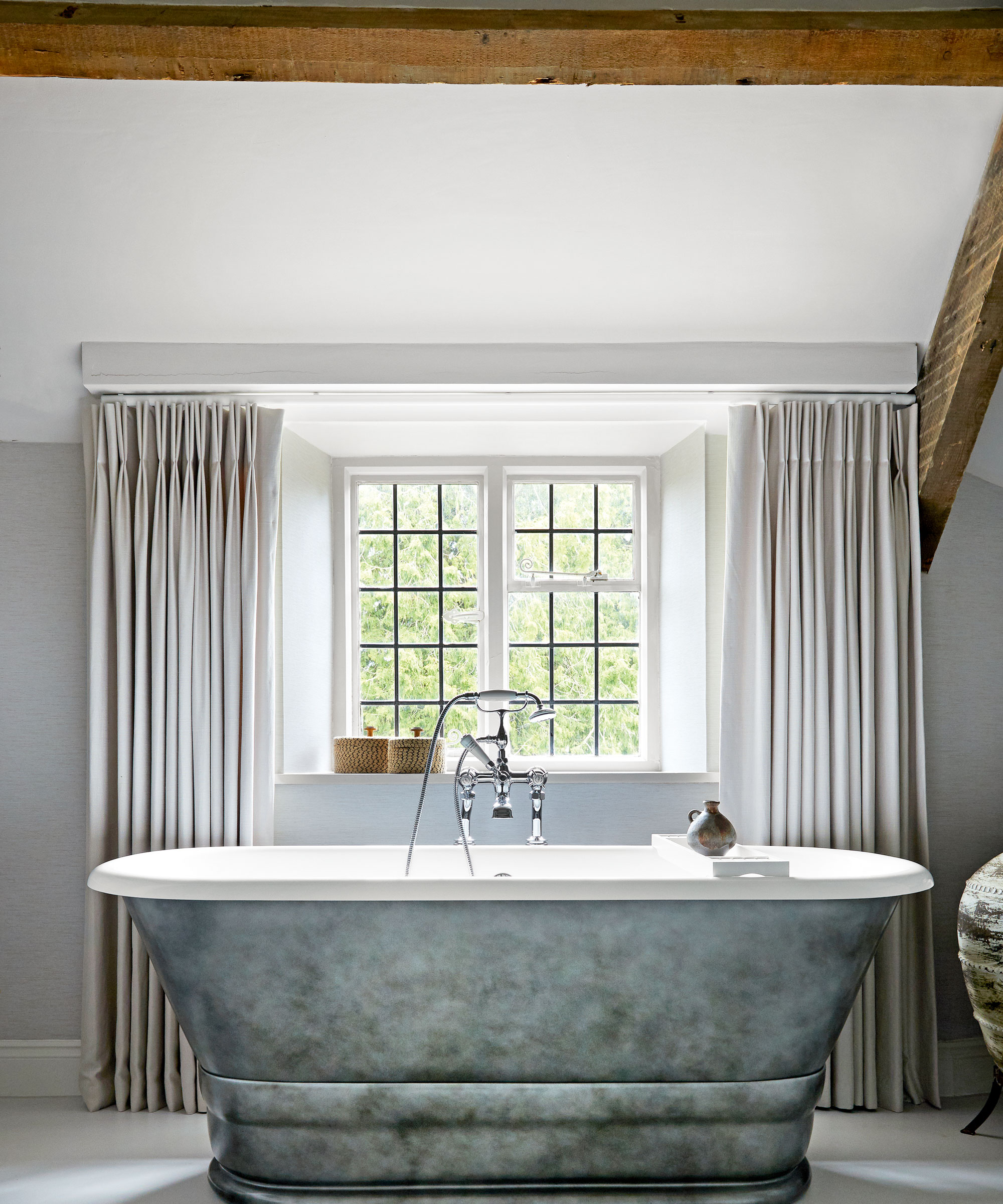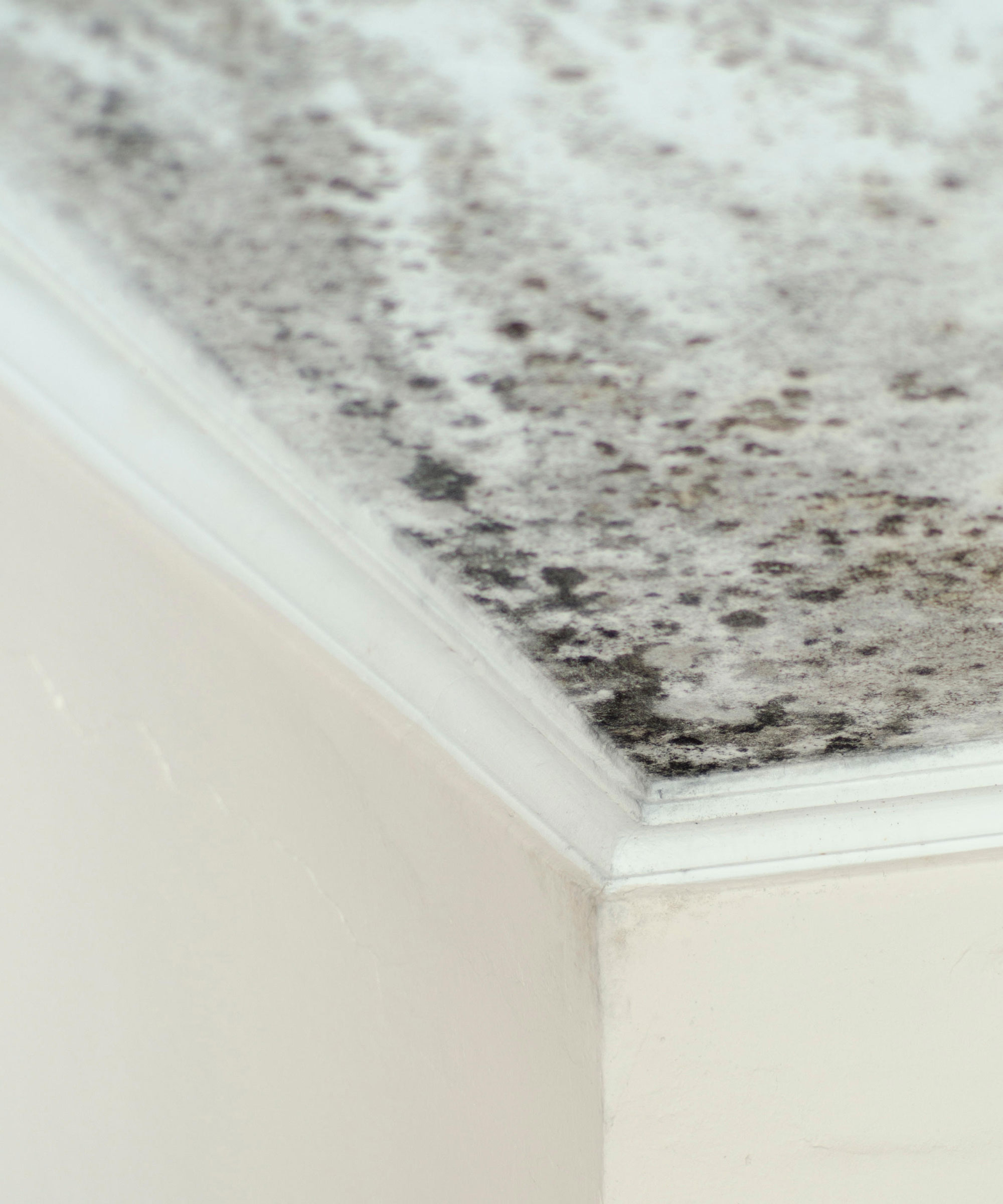The easiest way to get rid of bathroom ceiling mold
With the right products and tips from cleaning professionals, you can clean up bathroom ceiling mold easily


Bathroom ceiling mold often shows its face in winter with cooler temperatures causing moisture to stick around longer. There are a few ways to get rid of black mold in the bathroom, and measures you can take to stop it in its tracks.
But spraying a shop-bought mold killer or your own white vinegar and water solution is the most straightforward. Mold left on the ceiling not only looks bad, but it will spread, and it can cause respiratory issues – so it's worth tackling now.
Make sure you keep the space well-ventilated and wear a mask as the mold removal process can release mold spores into the air. Here's how to get your bathroom ceiling mold-free.

How to get rid of bathroom ceiling mold easily
Michael Rubino is a mold and air quality expert, and author of The Mold Medic, an Expert’s Guide on Mold Removal. He explains that mold grows roots called hyphae, which can reach within the surface that it’s growing on if it’s porous or semi-porous. That’s why it can be difficult to completely eliminate.
'Botanical products with surfactants are the best option,' says Michael, 'because they can help pull the particles to the surface so that they can be removed.' For semi-porous surfaces, specifically, hydrogen peroxide, at Amazon is a good option, followed by something like Benefect Decon 30.
Diana Rodriguez-Zaba is the head of IICRC-certified mold remediation company Service Master Chicago. She recommends a commercial mold remover, at Amazon or cleaning with vinegar by mixing white vinegar and warm water.

'Use a sponge to gently remove any visible mold from the ceiling. Be sure to wear protective gear, such as gloves, a face mask, and safety glasses,' she begins. 'Once you have removed any visible mold, spray the ceiling with the vinegar-water solution or commercial mold bleach.
'Let the cleaner sit for at least 15-20 minutes and then scrub the ceiling to remove any remaining mold,' she says. For hard-to-reach areas, dip a toothbrush in the solution and scrub. After that, rinse the area with fresh water and dry the ceiling with a towel.
Repeat this process if necessary, until all the mold has gone. If you have a textured ceiling experts recommend leaving mold removal to professionals as it calls for specialized ventilation masks and safety clothes.
How to stop mold from coming back
Prevention is always better than cure, and what Diana recommends is to give the walls a quick wipe with a towel whenever you get out of the shower. Or, you could use a squeegee, at Amazon.
Small jobs like this will make it easier to keep on top of things so cleaning the bathroom never becomes a mammoth task that takes all day. Keeping doors and windows open also prevents mold by helping air to circulate, and quickly spraying walls when you see the first signs of mold will also keep it under control.
It's all well and good cleaning up the mold to make things look better, after all, no one wants to sit back in a hot bath to see a load of black dots on the ceiling. But it'll keep coming back unless you work out what's causing it, as cleaning expert Angela from Hellamaid explains.

'You need to determine the source of the mold. If there is a leak, fix it first,' she says. 'If moisture is the culprit, install an exhaust fan and turn it on for 30 minutes every time you have a shower or bath.' She also suggests drying the floor regularly and not leaving damp towels in the bathroom.
Can vinegar kill mold on a bathroom ceiling?
Yes, vinegar will kill mold on a bathroom ceiling. Justin Carpenter, CEO at Modern Maids says white vinegar is an effective, natural way to get rid of mold from non-porous surfaces like tiles, countertops and walls. Like Diana, he suggests making a solution of equal parts white vinegar and water in a spray bottle. He recommends leaving it for a little longer, nearer an hour, and wiping it with a clean cloth. 'Vinegar can also be used to prevent further mold growth by spritzing it onto surfaces after cleaning,' he says.
Sign up to the Homes & Gardens newsletter
Design expertise in your inbox – from inspiring decorating ideas and beautiful celebrity homes to practical gardening advice and shopping round-ups.

Millie Hurst is a freelance lifestyle writer with over six years of experience in digital journalism. Having previously worked as Solved Section Editor at Homes & Gardens and Senior SEO Editor at News UK in London and New York, Millie has written for an array of homes brands including Livingetc and Real Homes and was formerly Senior Content Editor at Ideal Home. She has written and edited countless features on home organization, decluttering and interior design and always hopes to inspire readers with new ways to enjoy their homes. She loves to weave nature-inspired decor and nods to time spent in Italy into her own home.
-
 Everyone is obsessed with vintage tiles right now – bring the nostalgic charm of this classic design feature into your home with our 5 design ideas
Everyone is obsessed with vintage tiles right now – bring the nostalgic charm of this classic design feature into your home with our 5 design ideasHonor the past with our favorite ways to decorate with vintage tiles, as suggested by interior design experts
By Eleanor Richardson Published
-
 'It's a fast reset button' – using the 1, 2 ,3 ,4, 5 decluttering method cleared my persistent mess in seconds
'It's a fast reset button' – using the 1, 2 ,3 ,4, 5 decluttering method cleared my persistent mess in secondsIt's easy, effective and so quick to do
By Ottilie Blackhall Published